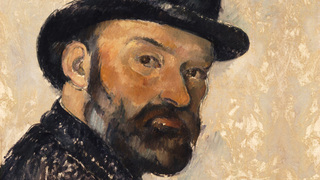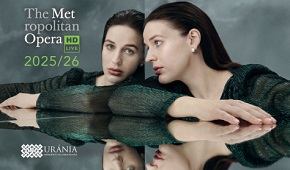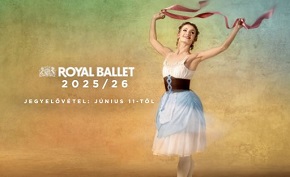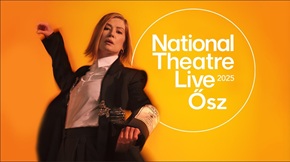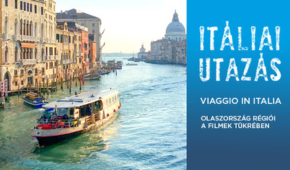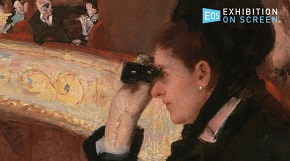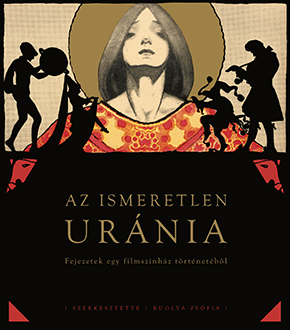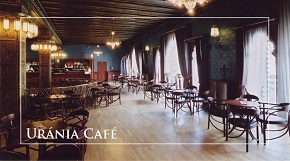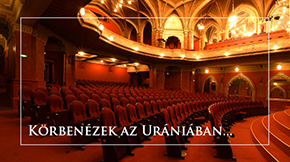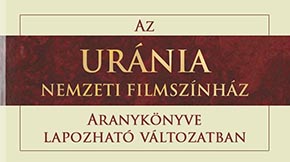Exhibition on Screen: Cézanne – Portraits of a Life
English art documentary, 90 min, 2018
in English with Hungarian subtitles
Director: Phil Grabsky
Paul Cezanne's life can be divided into two very different periods. Born in 1839 in a prosperous family, with a banker father, he chose a life and artistic career very different from the expectations of the bourgeois environment. All his young years he lived quite precariously from his father's allowances, supplemented with financial support received from his friends, including Emile Zola. Only after 1886, after his father's death, has was able to enjoy financial independence. That's when his artistic recognition also began. The younger painters of the time were the first to understand the revolution brought to art by the French painter, for whom not the subjects of his paintings were important but their form, the struggle with the artist's tools and materials in the desire to capture and remodel the colors and lights of the world. Throughout his life Cezanne was also an ardent and constant epistolary. The exhibition, organized two years ago and presented in 2017 and 2018 successively at the National Gallery of Portraits in London, the Musee d'Orsay in Paris and the Smithsonian in Washington DC, approached a topic less researched and less appreciated of Cezanne's works - his portraits. Phil Grabsky's 'Cézanne - Portraits of a Life' the 'Exhibition on Screen' cycle uses letters and portraits as milestones in the journey through the biographical and artistic path of the painter.
One might argue that Cezanne was not the most skillful portraitist in art history. Most of his portraits are self-portraits or represent Hortense, the painter's wife. These are inner-focused portraits. Thoughts, personality, feelings are not very visible - the attention of the viewer is attracted to something else. Shapes delimited by color and light, simplified and yet so eloquent geometry, the palette always expressive without ever being strident - all these are components of a change in the relationship between the artist and the subjects of his works. From this point of view Cezanne's portraits are on the same line as his landscapes or the still life works painted in the artist's studios. Each of these painting subjects had centuries-old history when they were approached by Cezanne. All these genres were looked at differently after Cezanne dealt with them.
Phil Grabsky's documentary follows Cezanne's life using works from the exhibition of portraits as visual material and the letters exchanged by the artist with his father, his friends (Emile Zola in particular), his contemporaries who were gradually beginning to recognize the value of his work, as text and commentary. Unlike other 'Exhibition on Screen' series, we get less information about the exhibition itself, although the curators, experts and directors of the institutions that hosted the exhibition make their contributions, especially through descriptions and explanations of portraits exposed in the context of other works of the respective periods. The documentary is complemented by biographical details related in particular to the family relations provided by Phillipe Cézanne, the artist's great-grandson. Some of the accompanying images are filmed in the artist's house and workshop, today a museum in Aix-en-Provence, which I had the opportunity to visit last year. The most eloquent images are however the paintings themselves, filmed on an overall and detailed level. Cezanne was an artist but also an artisan, inventor and road opener in shape, colors and technique. Art documentaries such as 'Cézanne - Portraits of a Life' help us to understand him, but direct contact with his paintings is a really unique and unforgettable experience.
More information about the season of Exhibition On Screen >>
Ticket information
Ticket price: 3600 HUF
For students, pensioners, teachers: 3200 HUF
Tickets are available at the Cassa of the Urania National Filmtheater (open every day, Credit Cards are accepted) and in the Ticket Sale System of Interticket (available in English too)
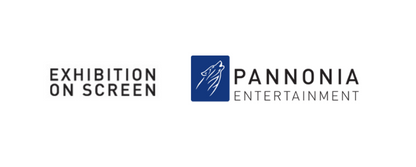
Distributor: Pannonia Entertainment
2025.12.25 11:00 - 12:30
2025.12.25 15:00 - 17:50
2025.12.26 11:00 - 13:00
2025.12.27 11:00 - 12:30
2025.12.27 17:00 - 18:30
2025.12.27 19:00 - 21:30
2025.12.28 11:00 - 12:30
2025.12.28 15:00 - 17:15
2025.12.28 18:00 - 21:30
2025.12.29 19:00 - 21:00
| Mo | Tu | We | Th | Fr | Sa | Su |
|---|---|---|---|---|---|---|
| 1 | 2 | 3 | 4 | 5 | 6 | 7 |
| 8 | 9 | 10 | 11 | 12 | 13 | 14 |
| 15 | 16 | 17 | 18 | 19 | 20 | 21 |
| 22 | 23 | 24 | 25 | 26 | 27 | 28 |
| 29 | 30 | 31 | 1 | 2 | 3 | 4 |
![]()
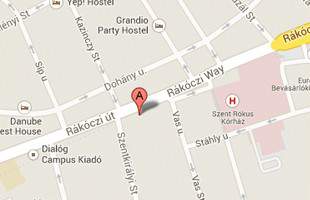
Opening hours: on weekdays at 2:30 PM, on weekends at 10:30 AM.
Box office closes 15 minutes after the start of the last screening.
The Uránia Café is open during the opening hours of the cinema.
© Uránia Nemzeti Filmszínház
1088 Budapest, Rákóczi út 21.
getting here
ticket info
contact us
company details
press
privacy policy

